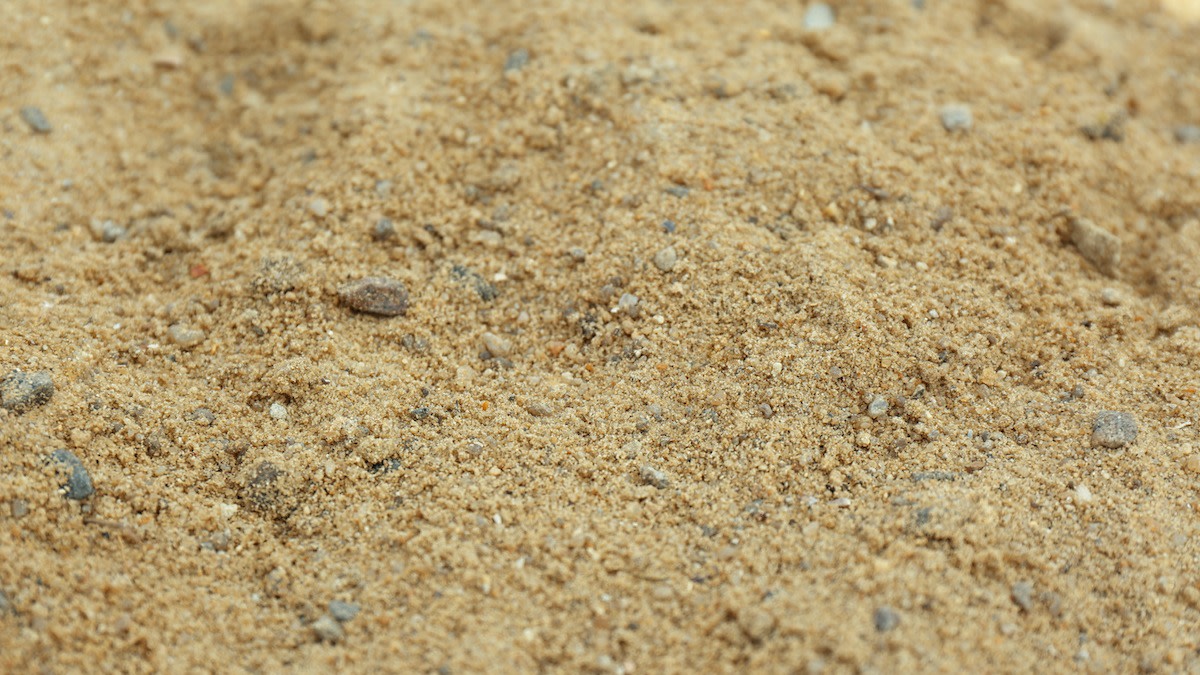How To Grow Roses In Sandy Soil For Beginners [Practical Tips]
Wondering how to grow roses in sandy soil? With a little preparation, your garden can be bursting with vibrant blooms.
Dec 21, 2024158 Shares78.8K Views

Growing roses is often seen as the ultimate test of patience and perseverance. Their delicate petals, juxtaposed with resilient thorns, seem to mirror the balance we must strike when tending to them. Yet, sandy soil adds another layer of challenge, a landscape where moisture escapes like fleeting hope. But fear not, for even in this shifting ground, roses can thrive if nurtured with tenderness, care, and an understanding of the earth beneath them.
The Nature Of Sandy Soil
Sandy soil, so light and loose, may seem a far cry from the rich, dark earth we associate with thriving gardens. But within its grains lies potential, space for roots to breathe, if only we can help them drink deeply and hold onto the nourishment they need.
Creating The Perfect Environment For Roses
The first step in growing roses in sandy soil is creating the ideal conditions for their roots to establish. Sandy soil drains water quickly, leaving plants dry, so it’s crucial to intervene with thoughtful preparation and care.
Location
Roses bask in the sunlight, needing 6-8 hours of direct sun each day to bloom at their best. In sandy soils, where moisture is sparse, ensure your roses are positioned where they can drink in the morning sun but avoid the scorching midday heat. This will give them the balance they need to thrive.
Preparing The Right Hole
When planting roses in sandy soil, the size of the hole is everything. Digging a deep, wide hole about two feet deep and two feet wide allows the roots ample space to spread and absorb nutrients. Think of the hole as the foundation of your rose’s home; the stronger and more spacious it is, the better your roses will grow.
Preparing Sandy Soil For Roses
Sandy soil may seem unforgiving at first, but with the right amendments, it can become a nurturing environment. To give your roses the best possible start, the soil needs to be enriched and fortified.
Organic Matter And Nutrient Enrichment
Organic matter is the secret ingredient that transforms sandy soil into a more hospitable environmentfor roses. Mixing compost, leaf mold, and well-aged manure into the soil helps it retain moisture and nutrients, ensuring your roses won’t be left thirsty. Additionally, bone meal or phosphorus can be added to promote strong root development.
But here's where you can also introduce a special ingredient: alfalfa. Though often overlooked, alfalfa is a powerful natural amendment for stimulating growth. Sprinkle alfalfa meal or pellets around the base of the rose after planting and water it well to help it break down into the soil. Alfalfa nourishes your roses with essential nutrients that boost their growth.
Mulching For Moisture Retention
Mulch is more than just decoration, it’s a vital component for protecting the soil and helping it retain moisture. Apply a 2 to 3-inch layer of organic mulch around the base of your roses, being careful not to let it touch the stem. Mulch keeps the roots cool, suppresses weeds, and gradually breaks down, adding more organic material to the soil over time.
Planting Roses In Sandy Soil
When planting roses in sandy soil, it’s essential to understand how climate and soil affect plant growth. The interplay between these factors determines how well your roses will thrive in challenging conditions. By carefully preparing the soil and adjusting your care routine, you can help your roses adapt to sandy environments.
Choosing The Right Rose Varieties
Not all roses are created equal, and some are better suited to sandy soil than others. Look for hardy varieties like Rugosa or Floribunda, which can withstand the challenges of sandy environments and are known for their resilience.
Preparing The Planting Site
Before planting, clear the area of debris and loosen the soil to allow for better root penetration. Sandy soil tends to be compact, so it’s important to break it up and incorporate organic matter to improve structure.
Spacing Your Roses
Roses need room to breathe, and this is especially true in sandy soil. Space each plant at least 3 feet apart to encourage healthy airflow and reduce the risk of diseases. Adequate spacing also ensures that the plants won’t compete for nutrients.
Using Soil Amendments
Adding organic matter like compost or aged manure to the planting hole is essential in sandy soil. This helps retain moisture and provides much-needed nutrients. You can also mix in slow-release fertilizers to give your roses a nutrient boost as they establish themselves.
Planting Depth And Technique
When planting roses, dig a hole that’s wide enough to spread the roots comfortably but not too deep. For bare-root roses, create a small mound of soil in the center of the hole and spread the roots over it. For container-grown roses, make sure the crown sits just above ground level.
Watering After Planting
After planting, it’s crucial to water your roses deeply. Sandy soil drains quickly, so it’s important to ensure the water reaches the roots. Water thoroughly to help the soil settle and prevent air pockets around the roots.
Caring For Roses In Sandy Soil
Proper care is essential for your roses' plant development, especially in challenging sandy soil conditions. Ensuring consistent watering, regular feeding, and protection from extreme weather will help your roses grow strong and bloom beautifully.
Watering Techniques For Sandy Soil
Since sandy soil drains quickly, roses in such soil need frequent, deep watering. The key is to water slowly to allow the moisture to penetrate deep into the roots. Consider using drip irrigation systems or soaker hoses to provide a consistent water supply.
Best Fertilizers For Roses In Sandy Soil
Sandy soil often lacks nutrients, so using the right fertilizers is essential. Opt for slow-release organic fertilizers that nourish the plants over time. You can also apply compost tea or fish emulsion every 4-6 weeks during the growing season to boost growth.
Mulching To Retain Moisture
Mulching is crucial when growing roses in sandy soil. Apply a thick layer of organic mulch around the base of the roses, ensuring it doesn't touch the stems. This helps retain moisture, reduces soil temperature, and prevents weeds from competing for nutrients.
Pruning For Stronger Growth
Regular pruning is vital to encourage healthier blooms and prevent your roses from becoming overgrown. Focus on removing dead or diseased canes and cutting back the plant to promote new growth. Pruning also improves air circulation around the plant, reducing the risk of disease.
Managing Pests And Diseases
Roses in sandy soil can be vulnerable to pests like aphids, spider mites, and diseases like black spots or powdery mildew. Use organic pest control methods like neem oil or insecticidal soap. Keeping the plant well-watered and pruned also helps prevent infestations.
Protecting Roses During Droughts
In regions where sandy soil is common, droughts can be an issue. Protect your roses by watering deeply and applying mulch to retain moisture. You may also consider installing shade cloth to protect them from the harsh afternoon sun.
Monitoring Soil PH
Sandy soil tends to become more alkaline over time, which can affect nutrient absorption. Regularly check the soil’s pH and adjust it as needed. Roses prefer slightly acidic to neutral soil (pH 6.0-7.0). Use organic amendments like sulfur to lower the pH if necessary.
Overcoming Challenges In Sandy Soil
Growing roses in sandy soil presents its own set of challenges, but with careful preparation, they can be overcome.
Addressing Nutrient Deficiencies
Sandy soil can quickly lose nutrients, so regular enrichment is essential. Feed the soil with organic matter and mineral-rich amendments, such as phosphorus and Epsom salts, to ensure your roses receive the nutrients they need.
The Role Of Alfalfa In Growth
One of the best-kept secrets for growing roses is the use of alfalfa. This humble plant product is known for its ability to stimulate growth in roses. After planting, sprinkle a cup of alfalfa meal or pellets around the base of each rose and water it in thoroughly. The alfalfa provides a slow-release source of nutrientsthat can dramatically boost your rose’s growth and blooming potential.
Improving Water Retention
Sandy soil drains quickly, which can deprive roses of the moisture they need. To overcome this, enrich the soil with organic matter such as compost or aged manure. These materials act like sponges, holding onto moisture and releasing it slowly to the roots.
Preventing Soil Erosion
Because sandy soil is loose and light, it can be prone to erosion, especially during heavy rains. Use mulch or plant ground cover around your roses to help anchor the soil and reduce erosion, while also maintaining moisture levels.
Managing Root Depth
Roses planted in sandy soil may struggle to develop deep root systems. Encourage deep rooting by watering deeply and less frequently, promoting roots to grow deeper in search of water. Adding organic matter can also improve the structure of the soil, making it easier for roots to penetrate.
Dealing With Nutrient Leaching
In sandy soil, nutrients can be washed away quickly due to the fast drainage. Combat this by applying fertilizers more frequently in smaller amounts, ensuring that the nutrients remain available for your roses without being washed away by the rain or watering.
Adjusting Soil PH
Sandy soil tends to become more alkaline over time, which can hinder nutrient uptake. To prevent this, regularly test your soil’s pH and use amendments like sulfur to maintain a slightly acidic environment that roses prefer (around pH 6.0-7.0).
Protecting Against Drought Conditions
Roses in sandy soil are more vulnerable to drought because the soil does not retain moisture well. To help protect your plants, use a thick layer of mulch to slow down evaporation and consider using drought-tolerant rose varieties. Water deeply and regularly during hot, dry periods.
FAQs
How Often Should I Water Roses In Sandy Soil?
Roses in sandy soil need deep watering every day for the first two weeks after planting to establish strong roots. After that, water deeply once a week, ensuring the soil retains enough moisture without overwatering.
What Type Of Roses Grow Best In Sandy Soil?
Hardy varieties like Rugosa roses or Floribundas are best suited for sandy soil due to their deep-rooting systems and resilience in less-than-ideal conditions.
Can I Grow Roses In Pots If I Have Sandy Soil In My Garden?
Yes, growing roses in pots can be an excellent option if your garden soil is sandy. Use high-quality potting soil mixed with compost for optimal growth, and ensure the pots have good drainage.
Is It Necessary To Amend Sandy Soil For Roses?
Yes, sandy soil benefits greatly from amendments like compost, aged manure, and organic matter. These enrich the soil and help it retain water and nutrients, which are essential for healthy roses.
Why Is Mulching Important For Roses In Sandy Soil?
Mulching helps sandy soil retain moisture and prevents it from drying out too quickly. It also regulates soil temperature and adds nutrients as it breaks down over time.
Can I Use Alfalfa To Promote Rose Growth In Sandy Soil?
Yes, alfalfa is an excellent natural amendment for promoting rose growth. Apply alfalfa meal or pellets around the base of your roses and water it in well. It helps stimulate growth and provides essential nutrients.
Conclusion
Growing roses in sandy soil is a journey, a symphony of resilience, love, and patience. With every step, from preparing the soil to watering and feeding, you are crafting a space where beauty can thrive. Though the sandy earth may seem reluctant at first, it is in that challenge that the true magic of roses lies. With your tender care, they will bloom against all odds, their petals a testament to hope and perseverance.
Latest Articles
Popular Articles

